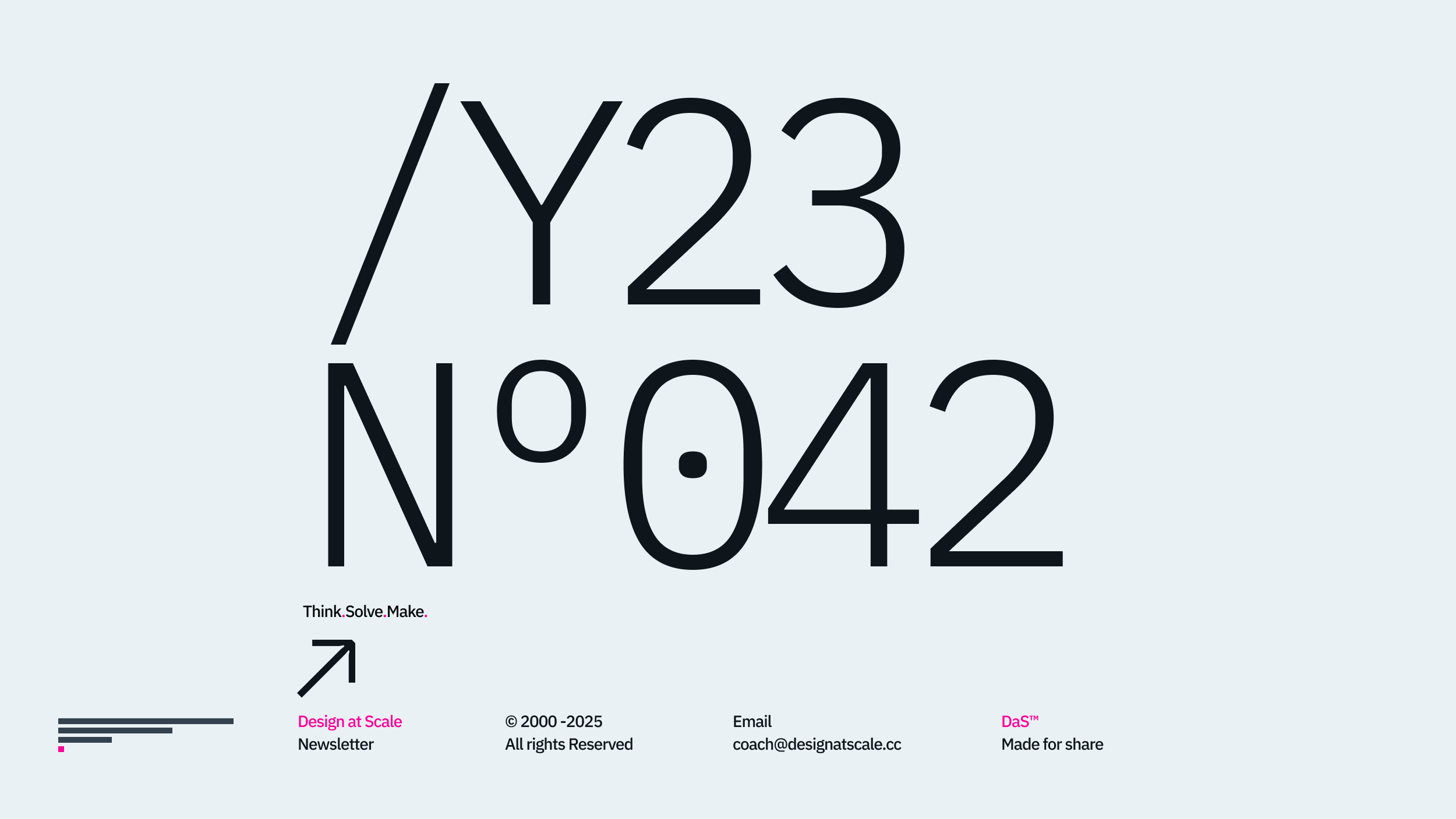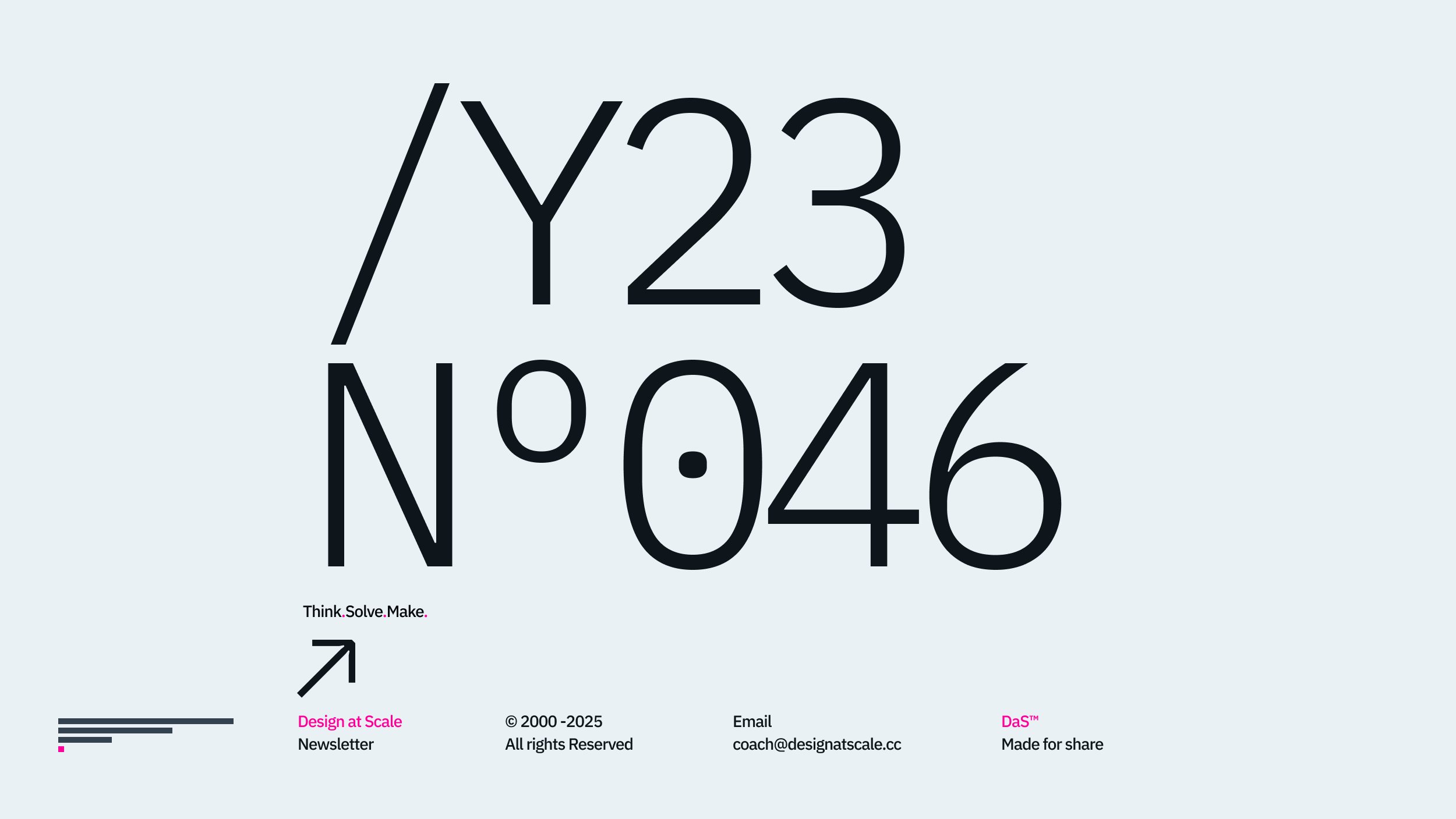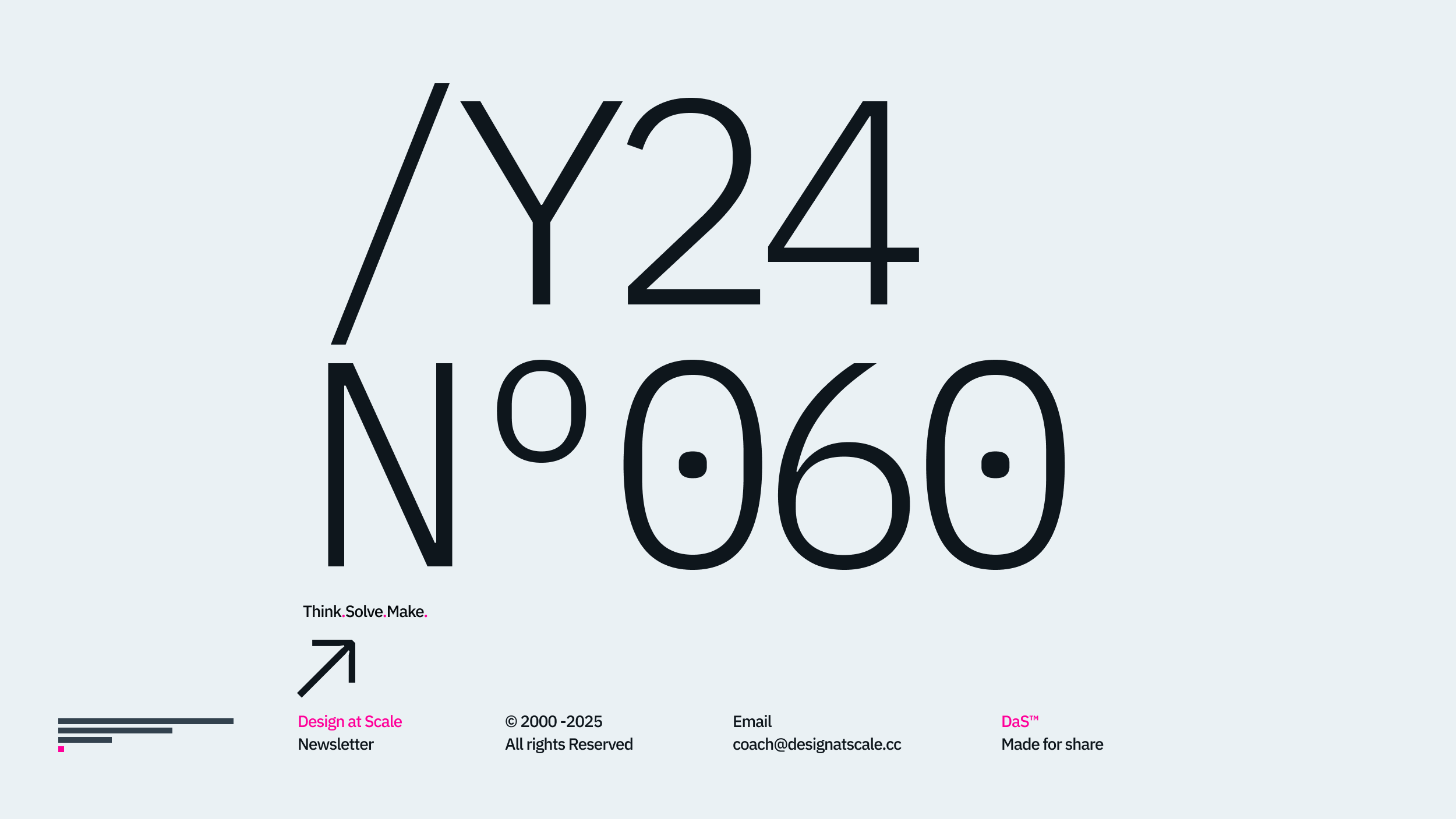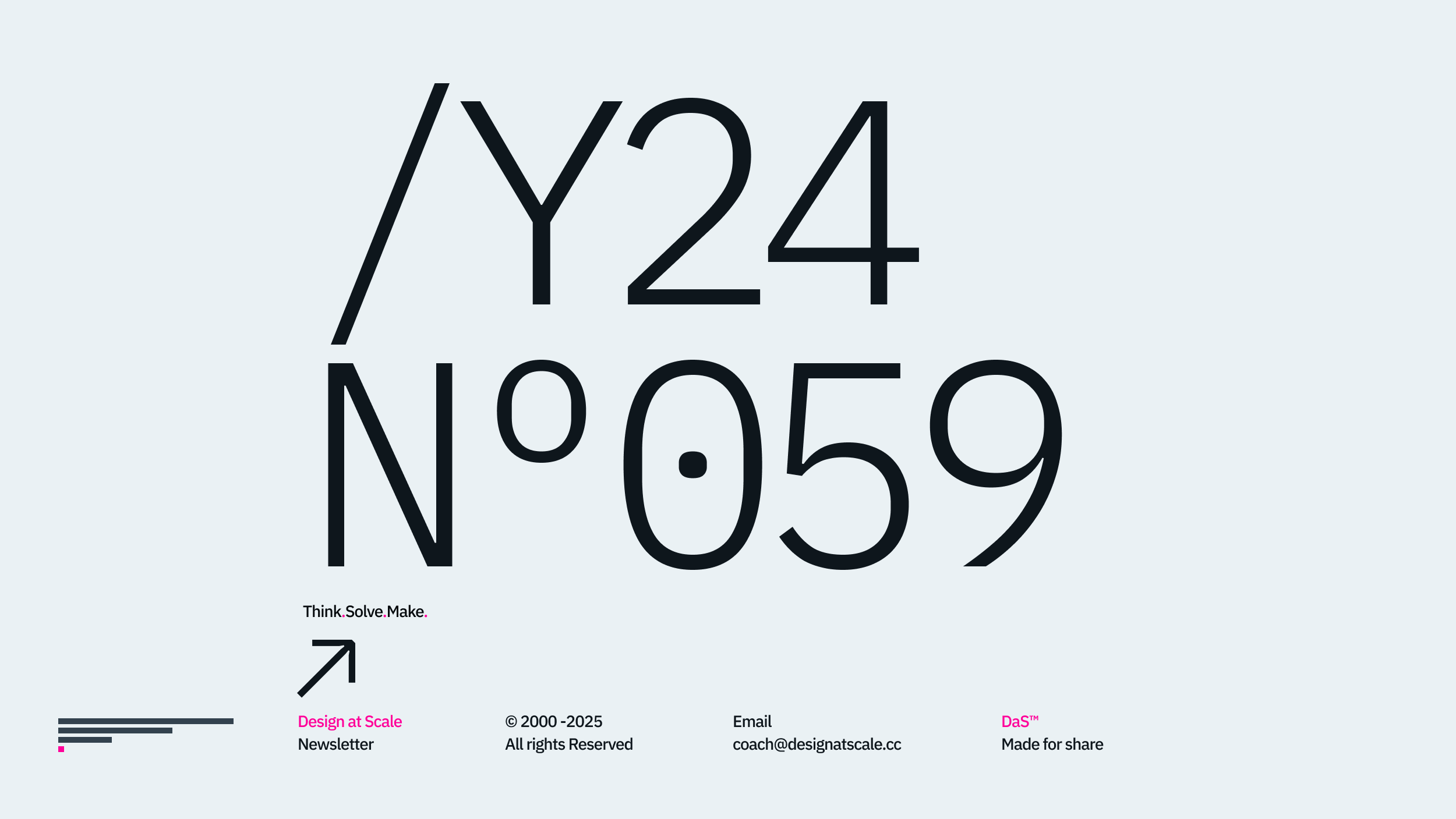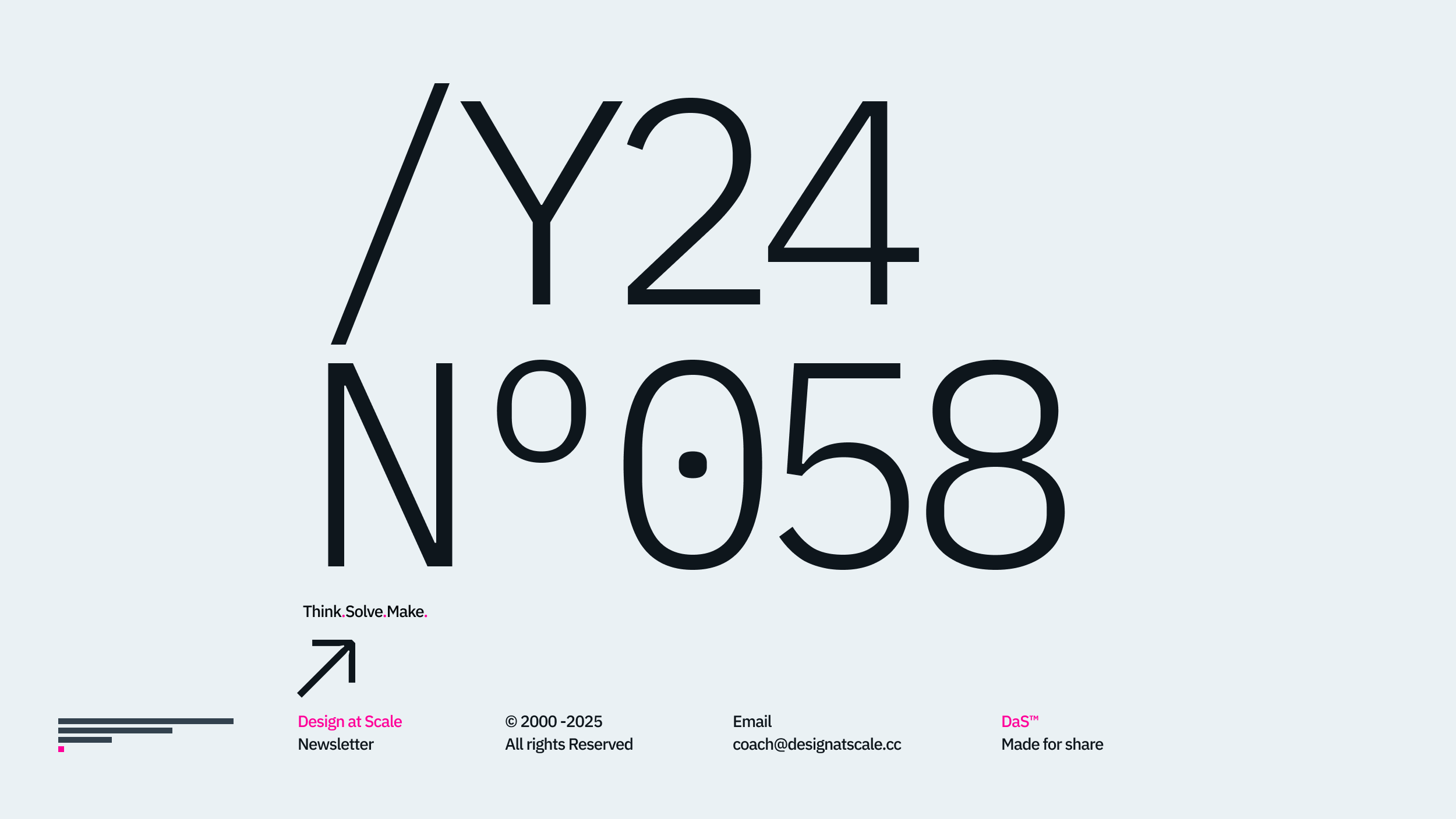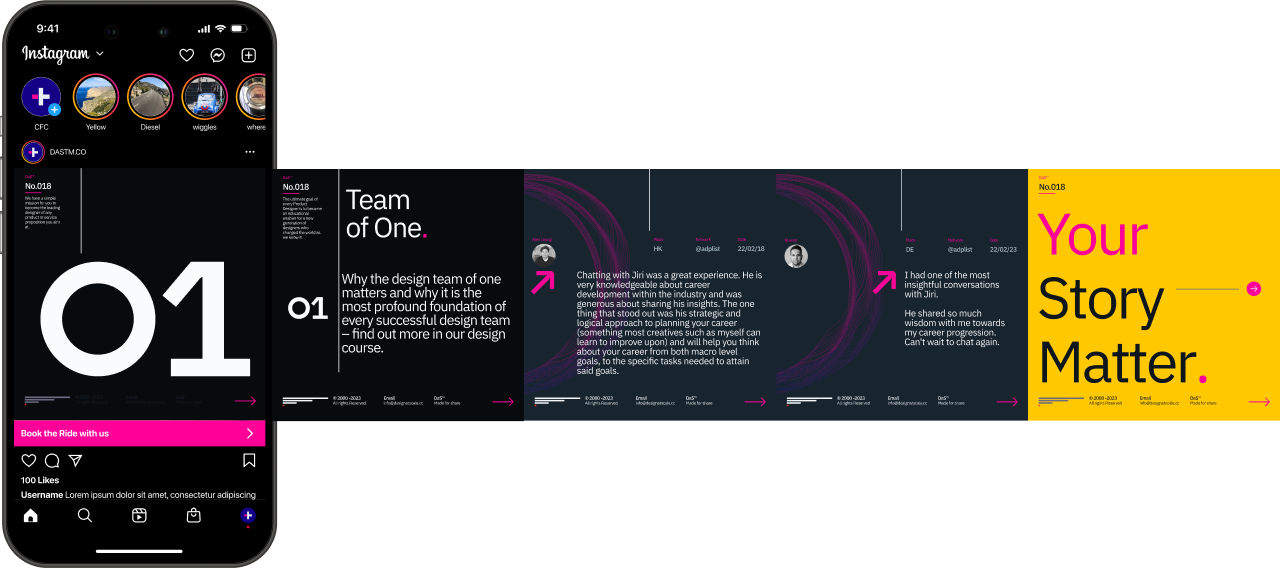Welcome back to our Design at Scale – Academy series, focusing on the design practice in a team of one hundred. This series will explore design challenges in teams above 100+ designers. Therefore, I will touch on transformation and design departments in corporations. We will explain why certain things do not work for design departments and how to overcome such obstacles by understanding one designer's past, present and future.
Disclaimer
The stories in between techniques are deliberately stripped of all client names and specific departmental structures to prevent the reputational damage of design professionals who share their stories in great detail. Equally, as this topic overlaps several disciplines, such as Project/Product Management, Business, and Engineering, we will solely focus on Design Function. For further debates, feel free to comment or reach out directly at @designatscaletm.
This series includes the following articles:
- Business Structure
- Evaluation Matrix
- Department Function
- Agile organisation
- Reactive vs Proactive
- Broadcasting vs Protecting
- Transparency
- Everyone is Designer
- Make it Scale

Business structure
The first article dives deeper into organisational charts by building on our previous exploration of design teams for ten people. We'll explore how these structures impact design delivery and why designers must understand the whole company framework. This knowledge unveils hidden dynamics and potential team rivalries, allowing designers to navigate more effectively. While some departmentalisation is natural, siloed structures can stifle collaboration, hindering the exploration of all possibilities for a project. Classic examples include marketing clashing with branding or needing more cooperation with product and service delivery teams. All this ultimately affects the business's support and function. By unpacking these complexities, designers can revisit their purpose, identify what truly matters, and navigate the structure to benefit their careers and the business.

Evaluation Matrix
The following article tackles the crucial question: 'How do we...' This article introduces a versatile assessment tool that helps designers understand their department's role and core functions. This tool allows them to collect, compare, and validate their design structure, focusing on its adaptability and ability to handle change. This framework is crucial for any design team, regardless of size. Companies needing such flexibility risk falling short of their potential under the false premise of product-led cultures. The assessment equips design managers, directors, and heads of UX/Design to make informed decisions for their teams and foster sustainable growth. Ultimately, it allows you to measure the probability of success for your design function or current project. This framework offers a clear roadmap for navigating crucial decisions and optimising design outcomes, no matter your team size.

Department function
After thoroughly evaluating the department's function, a critical choice emerges: maintain the existing function (e.g., updating an app) or build a new one based on data insights. This can often lead to splitting a team: one focuses on "business as usual" (BAU) tasks like bug fixes and maintenance, while the other concentrates on building version 2.0. Context switching between BAU tasks and creating a new version can significantly impact productivity. Studies show a potential 60% decrease in delivery efficiency. Defining the team's function allows for targeted resource allocation tackling specific challenges. This focus can lead to a 12-20% increase in productivity. Ultimately, this clarity empowers designers to leverage their expertise and contribute as strategic partners to the business, a position you'll enjoy and excel at.

Agile Organisations
Transparency is crucial for well-being and success in large organisations, even those not considered 'Agile.' Designers benefit from transparency as it equips them with the information needed to make informed decisions and ensure their work effectively impacts delivery. Transparency fosters better-informed teams, reducing the risk of failure, boosting morale, and strengthening connections among team members. This transparency encourages adaptability, a critical factor in today's constantly changing landscape. Large organisations may seem daunting, especially those with development houses or engineering functions exceeding 300 people. However, with transparency, these structures can offer unexpected advantages for design. Successful large organisations leverage data, remote work options, and well-organized structures. They rely on dashboards, analytics, and informed decision-making, allowing them to scale their design teams alongside the business.

Reactive vs Proactive
For large organisations, cultivating a strong culture is essential. An organisation's culture shapes its decision-making and response to challenges, ultimately becoming a key differentiator between success and failure. In Agile environments, the debate between "reactive" and "proactive" cultures is particularly relevant. Reactive cultures often wait to respond to competitor actions, leaving little time for thoughtful solutions. Proactive cultures, on the other hand, prioritise planning, discussion, and even healthy debate to ensure informed decision-making. This fosters a "growth mindset" within teams, allowing them to research, create, and validate ideas before significant investment. Dual-track Agile allows for both exploration and execution, enabling design and other functions to collaborate effectively within weekly sprints and maintain a focus on the customer.

Broadcast vs Protect
The success of any transformation hinges on a critical shift: moving from information silos to open communication. Information is power; traditionally, departments guarded it to control its dissemination. Today, thriving departments prioritise knowledge sharing through accessible platforms, not boring intranets, though some can be user-friendly!
A readily accessible knowledge base is crucial. It should answer essential questions like team structure, contact information, business goals, research findings, user experience maps, design assets, code access, version control, API details, and testing environments. With this knowledge readily available, teams can avoid a potential 60% increase in delivery time, hindering their efficiency. This can create a ripple effect, impacting the organisation's ability to deliver projects on time.

Transparency
Transparency is a cornerstone of building trust within a business. It fosters an inclusive culture where everyone feels empowered to contribute to the team's success, regardless of background or personal preferences. Similarly, in the business world, transparent communication embodies a sense of trust and shared purpose, leading to more substantial teams. Transparency empowers designers by informing them about the company's goals, direction, and role in achieving them. Furthermore, transparency facilitates vital collaboration across departments, fostering a unified approach between business, design, and development.

Everyone is designer
More vital collaboration fosters a culture where design thinking becomes an everyday practice for everyone in the business. While artistic expression remains a valuable design aspect, today's focus extends beyond the artist-audience relationship. Design thinking, emphasising problem-solving and user-centricity, has become vital for shaping environments, services, and products that improve our lives. Today, design serves a broader purpose. Millions of designers are shaping the world around us, from physical spaces to digital experiences. This user-centred approach prioritises data-driven decisions that enhance brand value, user engagement, and business success. While technical skills like typography remain essential, a designer's impact is increasingly measured by the ability to translate design thinking into measurable results. We've moved from an era focused solely on artistic expression to 'design at scale,' where design thinking permeates the organisation. This raises important questions: How can we foster inclusive design practices? How can we leverage design thinking to create innovative products? These are the questions we'll explore further.

Make it Scale
By embracing the concepts explored here, you unlock the potential to scale your design career. This empowers you to design products and services and shape the organisation itself. Supporting the design function allows you to connect with colleagues and learn about business integration, communication, data analysis, research, and automation. It fosters a collaborative environment where design thinking is integrated across all teams involved in continuous improvement. As your influence grows, you'll realise you've become an integral part of the team, unlocking possibilities for the entire company. By scaling design, you enable the business to scale itself – that's the core principle of design at scale.
Happy scaling through design!
Hey, I’m Jiri Mocicka.
London-based Design Director, Trusted Advisor and Author of Design at Scale™. The method that empowers individuals to shape the future organisation through design.
If you have a question, join our Community and reach out to like-minded individuals who scale design propositions. An online Academy can help you to find your feed in teams of 01, 10, and 100, supported by Grid Magazine and Supply section, where we weekly bring more insights on how to become a design leader in your organisation





